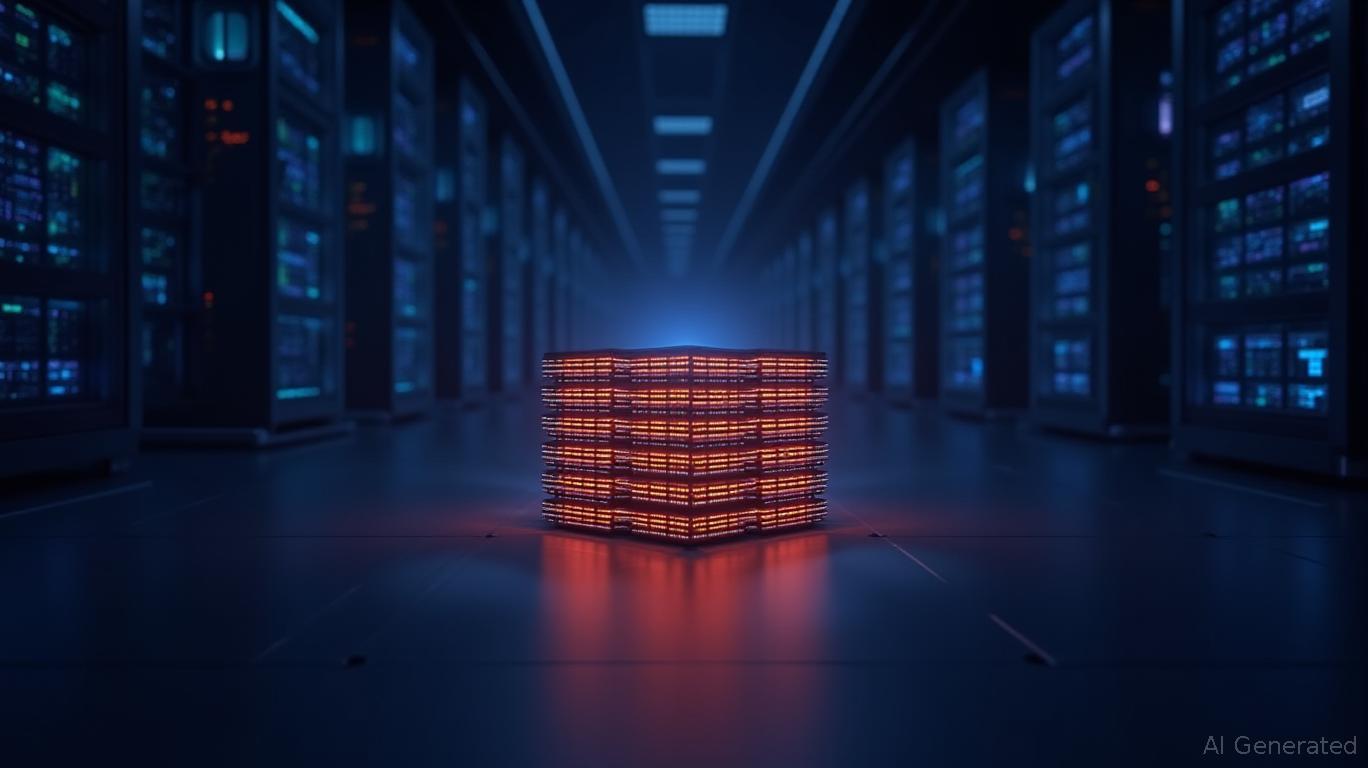SK Hynix's Memory Play: Dominating the AI-Driven Semiconductor Era
The semiconductor industry is undergoing a seismic shift. As artificial intelligence (AI) and high-performance computing (HPC) applications proliferate—from generative AI models to autonomous vehicles—demand for advanced memory chips has surged. Among the companies capitalizing on this trend, SK Hynix stands out. The South Korean giant has positioned itself as the undisputed leader in high-bandwidth memory (HBM), a critical component for AI workloads, and is now leveraging cutting-edge manufacturing and strategic partnerships to secure long-term dominance.

The AI Memory Gold Rush
The rise of AI has created a new hierarchy in the semiconductor market. Traditional DRAM and NAND storage are no longer sufficient for the data-hungry architectures of modern AI systems. Instead, specialized memory like HBM—designed to deliver ultra-fast data transfer rates and low power consumption—is becoming indispensable.
SK Hynix's recent moves underscore its ambition to dominate this space. In late 2024, the company unveiled the world's first HBM4 samples, a 12-layer chip capable of transferring data at speeds exceeding 2 terabytes per second—a 50% improvement over its HBM3E predecessor. Mass production of HBM4 is set to begin by late 2025, with SK Hynix already supplying samples to key partners like
and .
Note: SK Hynix's AI memory-driven revenue surged 48% year-over-year in 2024, outpacing rivals.
The Technology Edge: Process Nodes and Ecosystem Partnerships
Behind SK Hynix's
leadership lies its mastery of advanced semiconductor manufacturing. The company's 1α/1β process nodes—part of its 10nm-class DRAM platform—enable smaller chip geometries, higher density, and lower power consumption. These nodes now form the backbone of its HBM3E and HBM4 production, while its latest 1c node (a sixth-generation 10nm process) has further refined efficiency, reducing power use by 9% and enabling 16Gb DDR5 modules.Equally critical is SK Hynix's ecosystem strategy. The company has forged deep ties with AI hardware leaders:
- NVIDIA: HBM3E is integrated into NVIDIA's Blackwell GPUs, which power large-scale AI models.
- Dell Technologies: SK Hynix's CXL-based CMM-DDR5 modules (offering 50% more capacity than standard DRAM) are being showcased in Dell's servers.
- Intel: SK Hynix's 1β-node DRAM is optimized for Intel's 4th Gen Xeon Scalable processors, targeting AI data centers.
This partnership-driven approach ensures SK Hynix's memory solutions are embedded in the hardware ecosystems that will fuel AI adoption.
Financials: A High-Margin Play on AI's Growth
SK Hynix's financial results validate its strategic bets. In Q1 2025, the company reported $12.8 billion in revenue, a 42% year-over-year jump, with operating margins hitting 42%—a historic high. HBM now accounts for over 40% of its DRAM revenue, up from just 10% in late 2023.
Note: SK Hynix's margins have expanded relentlessly, outperforming peers amid rising AI demand.
The company's focus on high-margin AI products has insulated it from cyclical DRAM price declines. Meanwhile, its $14.5 billion investment to convert its M15X plant to advanced memory production—a move to capitalize on surging HBM demand—is already paying dividends.
Risks on the Horizon
SK Hynix's path to dominance is not without obstacles.
1. Geopolitical Headwinds: U.S. export restrictions on advanced memory to China, a key market, could crimp growth.
2. Competitor Pushback: Samsung's delayed HBM3E ramp and Micron's aggressive HBM investments threaten market share.
3. Technological Complexity: HBM4's advanced packaging requires precision; any yield issues could delay mass production.
The Investment Case: A Long-Term Play on AI's Infrastructure
SK Hynix is not just a memory supplier—it's an enabler of the AI revolution. Its leadership in HBM, combined with its process node innovations and ecosystem partnerships, positions it to capture a disproportionate share of the $242 billion DRAM market expected by 2033.
For investors:
- Buy the dip: SK Hynix's stock has underperformed peers in recent quarters due to macroeconomic jitters, but its fundamentals remain robust.
- Hold for the long term: HBM demand is set to explode as AI models scale. SK Hynix's 30-year roadmap, targeting 2050, suggests it's building for decades of growth.
In a sector where winners are increasingly defined by specialization, SK Hynix's focus on AI memory makes it a rare buy in the semiconductor space.
Disclosure: This analysis is for informational purposes only and should not be construed as investment advice.

Comments
No comments yet